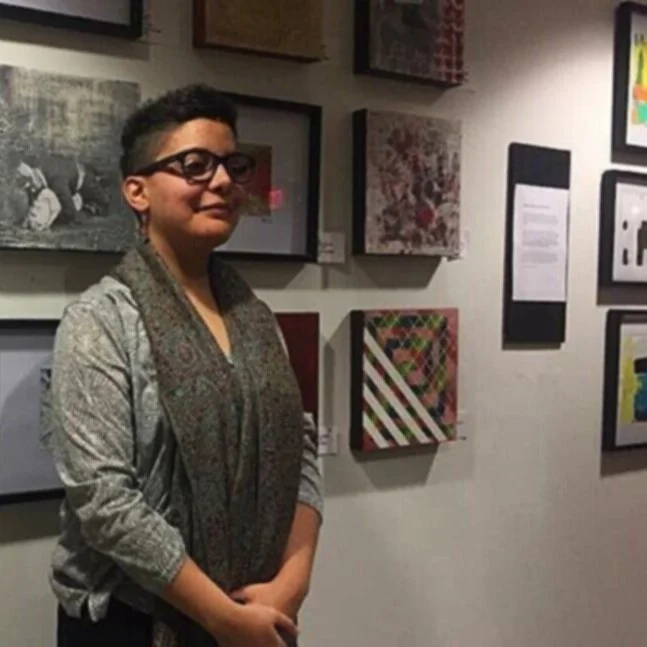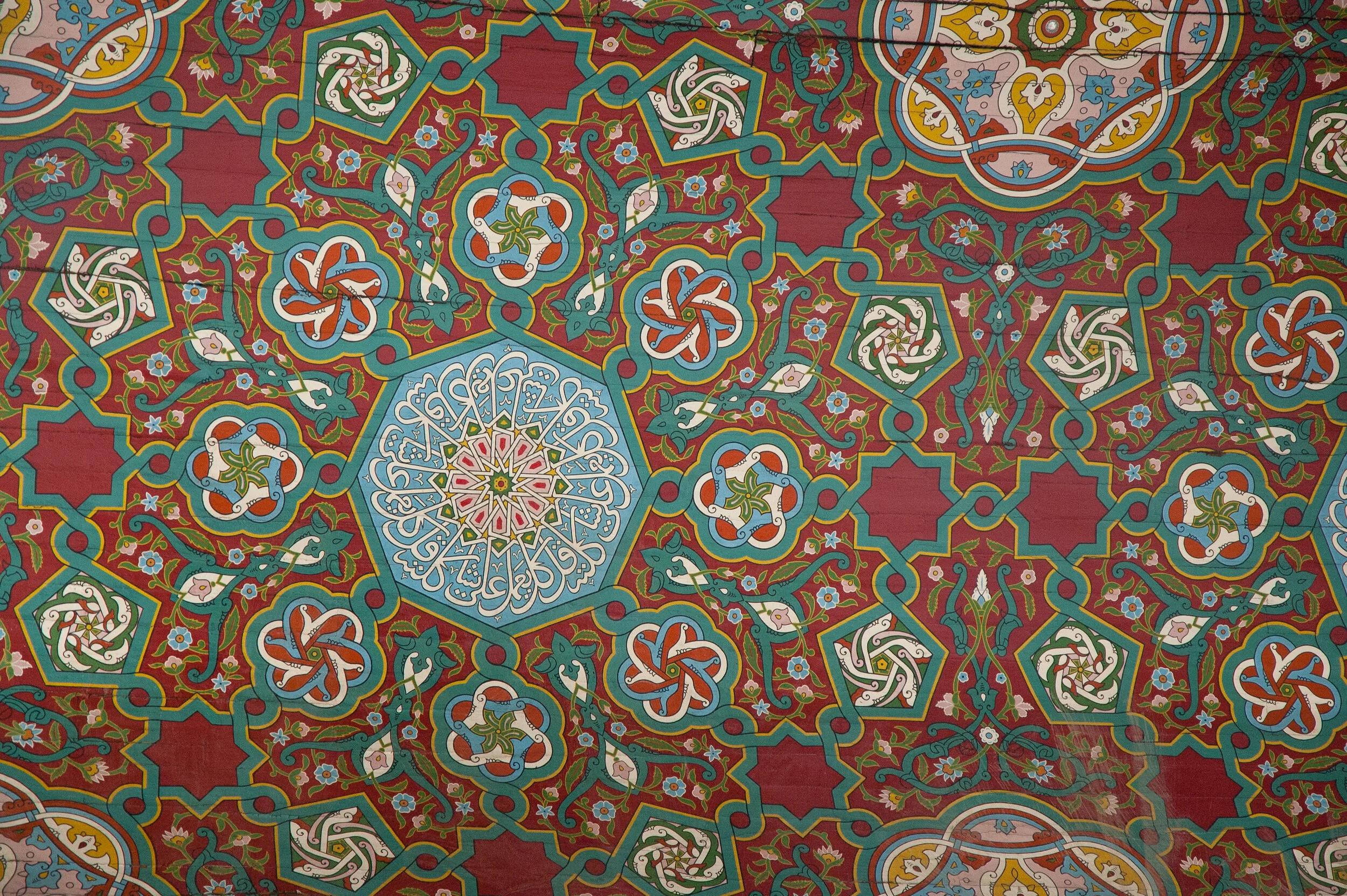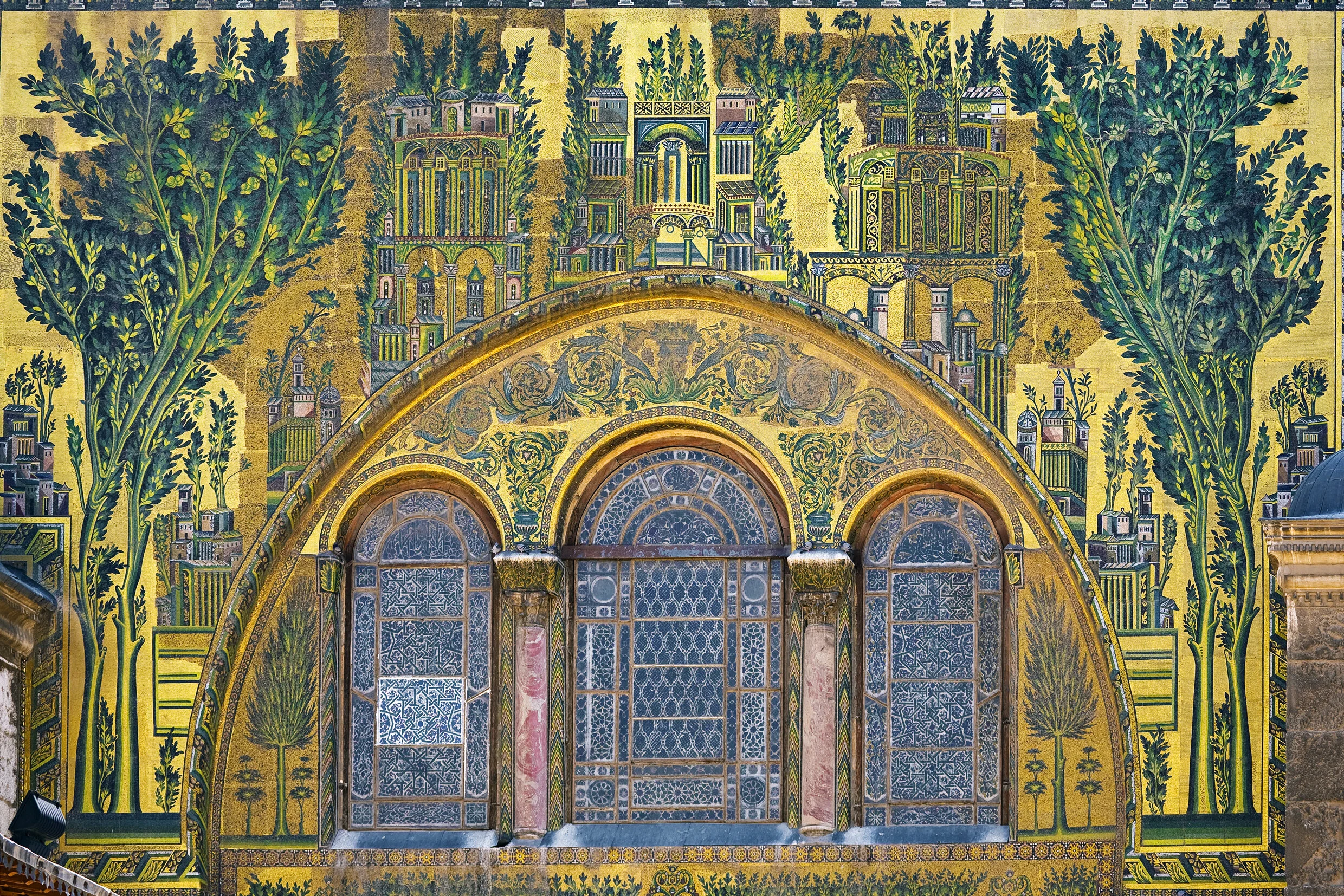Intersections of Art: Syria
Interviewing Kai A.M., Director of Gallery 1265.
Kai A.M., photo courtesy of the artist
How does your personal identity inform your creations?
Personal identity has a unique perspective in my case. As a previous refugee, I started to collect different aspects from each culture I interacted with. As a result, you can see elements in my creations that usually don’t come together in one piece. Yet, these elements are a reflection of my identity crisis beyond logic and rationality. Yet, in the end, it comes together to be a beautiful piece of art, which gets interpreted in different ways each time you see it.
How has your culture influenced your art?
I do mainly mixed media; I love to merge photography with foreign elements. My main inspiration is the Syrian Mosaic, where small pieces come together to shape a big beautiful visual. Also, my culture is the reason behind the obsession with details in every part I work on.
Ceiling of Ummayad Mosque in Damascus, Syria
by Szymanskim via Adobe Stock
What does art look like at home?
In Syria, there are many schools of art. Each religious community celebrates its long history and heritage through art. You can see many Arabic calligraphy pieces in most Muslim households. Any visual of the human face or body is forbidden in all its shapes. On the other hand, in all churches, you can see ancient icons all over the place; some of these icons date back to the beginning of Christianity. Also, Judaism has its own ancient art print in the country. Symbols from the Torah and Star of David have been dug above the house doors in the old Jewish quarter of each Syrian city. The art extends to inside the Synagogues in shapes of Hebrew Calligraphy pieces and more.
However, you can also see the artistic heritage of the local beliefs among the Abrahamic religions. It may surprise you to know that over 20 local belief systems and communities in Syria have been practiced for thousands of years until now. On top of the previous groups and their artistic heritage, you can enjoy the presence of the ancient civilizations (Assyrian, Syriac, Chaldean and more), that left a lot of historical pieces in many Syrian cities.
Syria. Damascus. Omayyad Mosque. Fragment of facade the prayer hall covered with rich mosaics
by Witr via Adobe Stock
The other thing which will capture your attention in Syria’s churches and temples is the colourful glass of all the windows, which gives the space where it’s installed a unique depth and horizons of colours crossing the room. My hometown Damascus is known for different types of arts. Inside each of the ancient houses, which have been built hundreds of years ago, you can see art in all the interior details. Arabesque, an artistic way to decorate the wood of furniture and ceiling, gives any space that glorious feeling of the hybrid architecture with marble. Besides the handmade furniture, curtains have their portion of extra care in details; Damascus city has known for centuries for its very unique fabric, from bridal dresses to curtains and table covers, you can see the number of hours the tailors have spent making a complex texture in each piece of fabric. Most of the household items are handmade, there are a lot of bazaars and markets all over the old city, where each Bazar is specialized with a specific type of handmade products, from steel and silver cutlery and swords to wood footwear, leather, glass, any material you can think of has its own market and handmade products. In each of these handmade products, there is an inherited art that generations have learned and mastered. I’ve been to many countries post the Syrian civil war. Yet, I haven’t found any scene of ancient methods and generational artists who still produce handmade items like those in Syria, where art is mostly not taught in schools or universities but rather small shops in each corner of the country.




